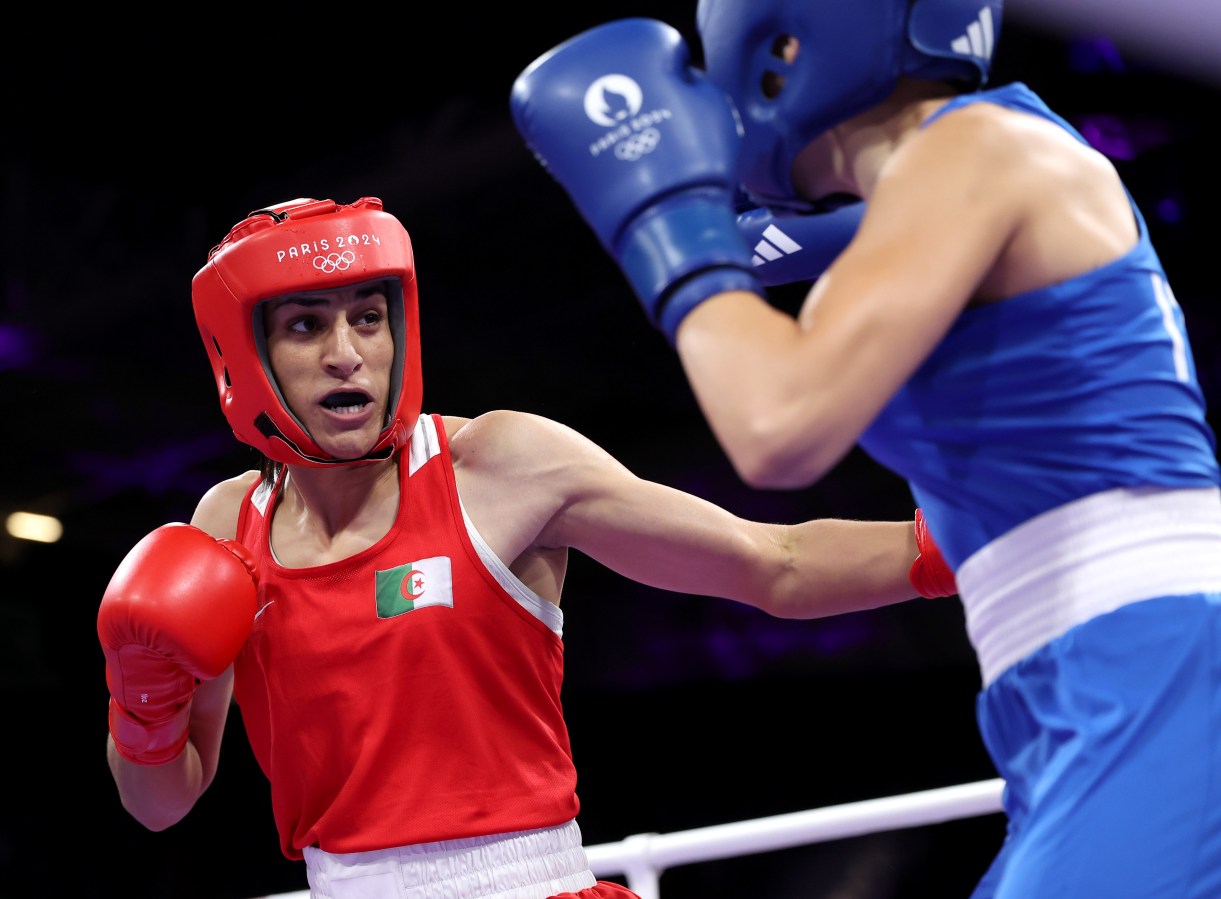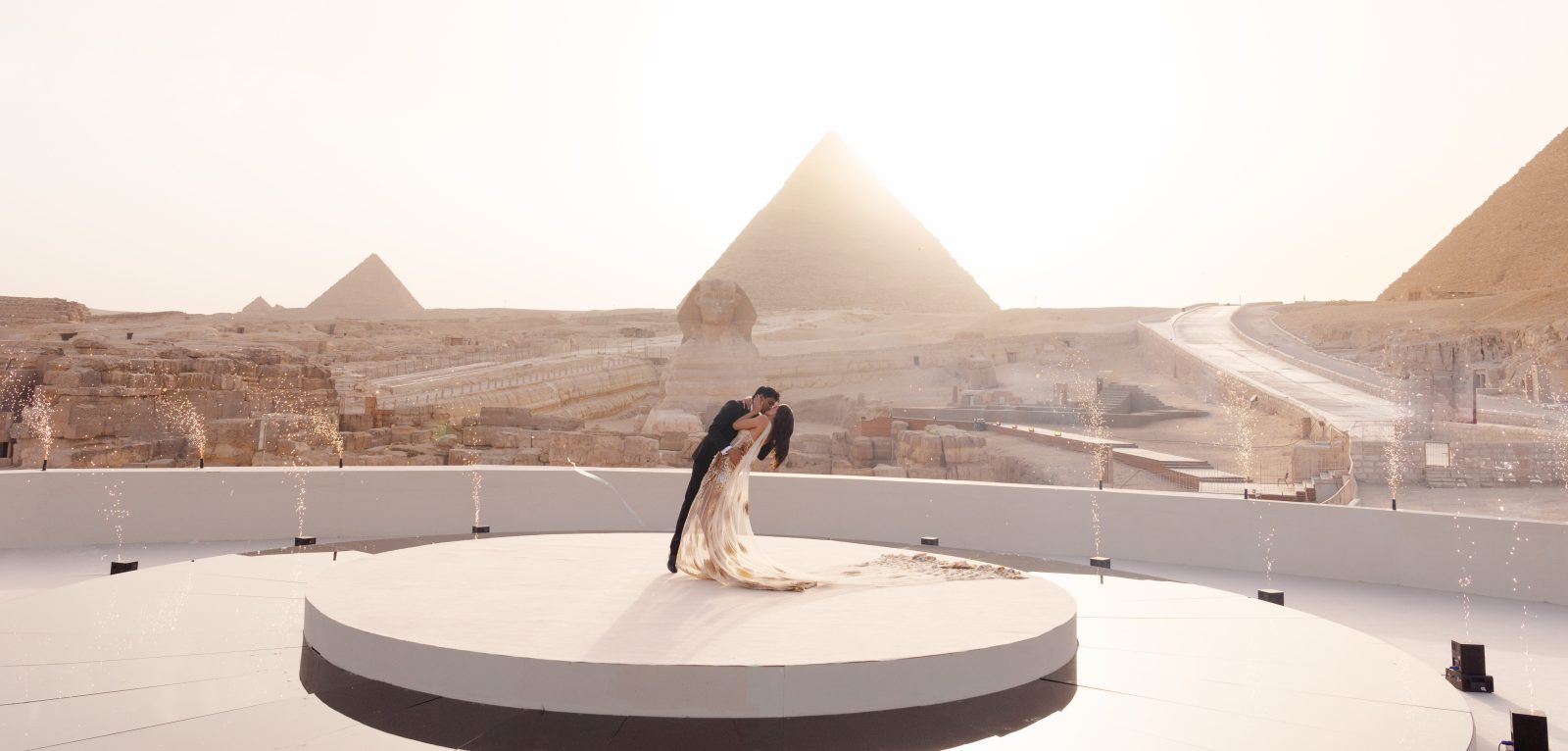Combat sports are seeing a rapid rise in the number of women participating professionally. Motivation to compete at this level, in what are some of the toughest sports on the planet, is both complex and nuanced. Stewart Hawkins talks to an upcoming pro-fighter and Australia’s reigning top female Olympic boxer to delve into why they choose to do it in this still largely male-dominated arena.
This story was featured in Issue 17 of Forbes Australia. Tap here to secure your copy.
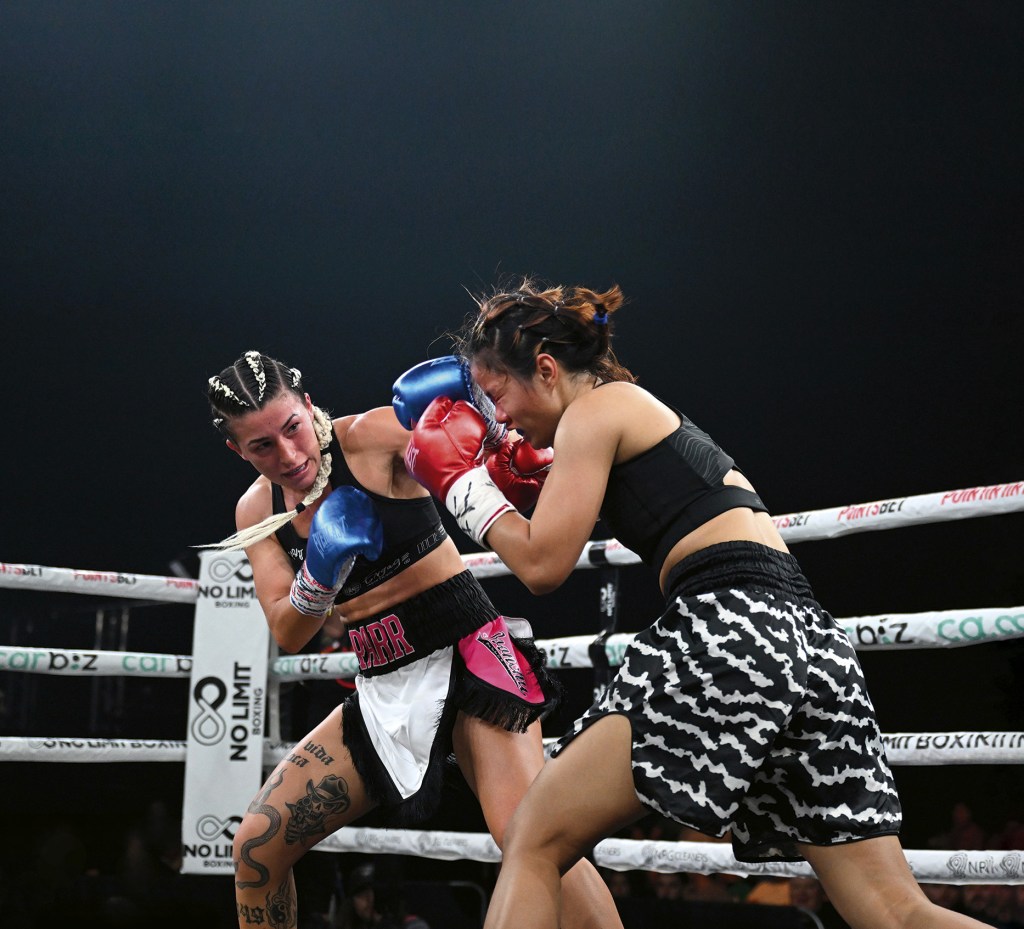
Fight night.
We’re at Sydney’s legendary Hordern Pavillion.
Two crowd favourites, Sam Goodman and former Olympian Harry Garside, top the card, all but guaranteeing a sell-out show.
Music is pumping, and flame throwers are firing jets of heat toward the ceiling that you can feel 10 metres away.
The smoke haze is building (ironically, considering smoking is banned – it’s from smoke machines), and the ring girls clad in gym gear prance as the early patrons get drinks and find their seats. If this seems like an image from a time long gone, it kind of is. Pro-boxing still has that old-school way, and few in the fight game are looking to change it.
Hold that thought, though.
As the fighters for the last bout on the preliminary roster enter the ring, shouts of “JAZZY” and “GO JAZZY” ring out.
“The Princess” Jasmine Parr – combat sports royalty, the 22-year-old daughter of two-time world champion Angela Rivera and 10-time world champion John Wayne “The Gunslinger” Parr is entering the ring following the only loss in her professional boxing career and looking to take the win against Thai fighter Jittamat Phomta.
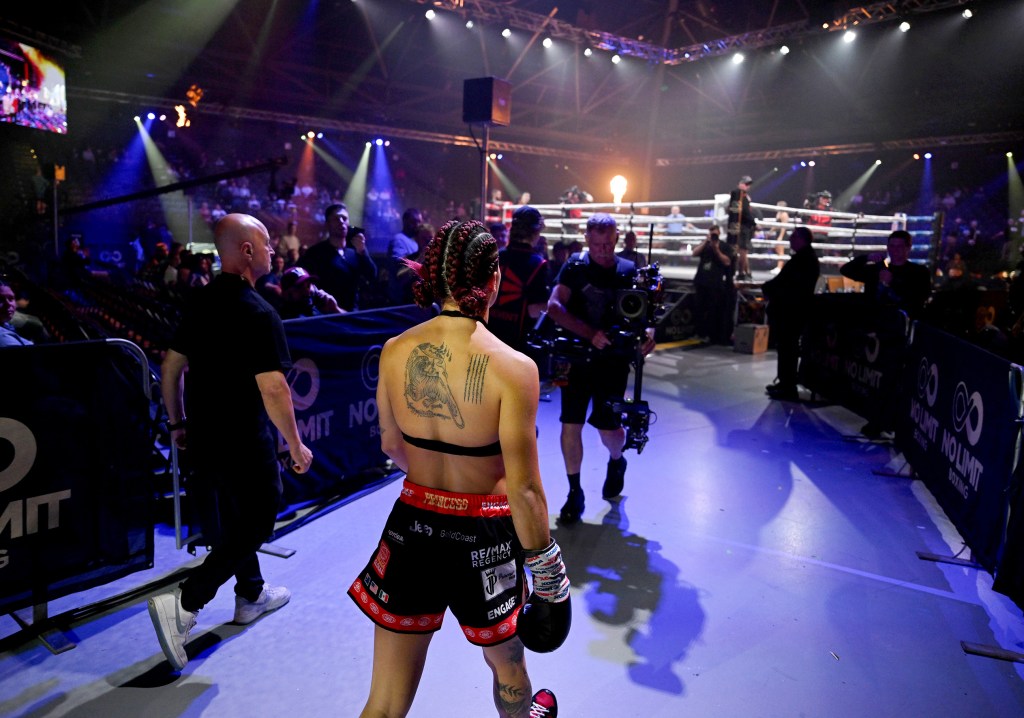
This is the only “girl fight” on the card, Parr’s expression, not mine, and what a contest. Parr exploded out of her corner, crossed the ring diagonally to her opponent, who’d barely emerged from hers and unleashed. She won by technical knockout in 71 seconds, dominating the visitor.
She was barely sweating and still obviously full of post-fight adrenaline when I spoke to her after the bout and asked how it felt to be a winner following the previous close loss to the veteran fighter Shannon O’Connell.
“Winning is really good,” she said. “But fighting feels even better. I just want to fight, I’m happy to fight anyone.”
Those comments resonated. Interviewing many male fighters in martial arts, I’d heard about dominance, proving something to themselves, and myriad other thoughts.
Jasmine Parr had come to the Hordern, ultimately, to fight. Pure, simple. The compelling question was why?
Doing it for themselves
Women in combat sports aren’t new.
Apocryphally, Wing Chun (an art characterised by using evasive and defensive moves rather than strength) was developed around the beginning of the 18th century by a Buddhist nun from the Shaolin Temple.
Judo founder Kano Jigoro trained women from the early days in the late 19th century, and Japan’s Kodokan opened a women’s division in 1926.
But seeing women on the main stages of world boxing, MMA, and Muay Thai is.
Dr Kotryna Lewis, a Sydney University lecturer and sports psychology consultant, when asked why women want to take it to this level, said a better question was why some people exercise for the sake of exercise, and others pursue competitive sport.
“Why do some people try out boxing? That’s normally self-defence, to [have] some sort of empowerment to build their self-esteem,” she says.
“For others, they might have started [there] but then actually found a competitive edge. They discovered they could be who they actually wanted to be. They’re not restrained to sit down, be quiet, and do as I say. They’re encouraged to show their personality.”
Lewis does stress that for women, the nuances and complexities of combat sports are different to those faced by men.
“Some parents would say, I don’t want my daughter to be aggressive. Some coaches would say, ‘Oh it’s okay, don’t push, don’t try as hard’,” she says.
“Male athletes would be encouraged to push, run harder, go further, be more aggressive. I’m not saying that every coach is the same or every parent [but] when a woman comes into combat sport[s], [they have] to navigate this very hard internal dilemma. Maybe I’ve always been competitive, I’ve always been sporty and not girly-girl, and these are the phrases that people would use.
“They need almost to prove themselves; they’re masculine enough to fight, yet they’re feminine enough to be a woman. But do they want to be feminine enough? We’ve got many different nuances they need to deal with.”
Lewis’s take on why we now have higher numbers of female participants in the pro level of these sports is because of the increased number of role models combined with changing societal stereotypes.
She also cites research showing women generally feel safe in boxing gyms when training with men, a sentiment backed up by female fighters I spoke to who made a point of commenting on the camaraderie and, indeed, a genuine sense of family they experienced there.
She did point out that it’s not unique to combat sports. Other female athletes also train with males to be pushed harder.
Dinah Glykidis is CEO of Boxing Australia, the peak body for male and female amateur boxing. The amateur nomenclature is a technicality and refers to the status of the fighters rather than any specific ability. For instance, Olympic boxing is technically “amateur”, and as Paris Olympics bronze medallist Cailin Parker points out: “People that I’ve beaten multiple times are now world champions in the pro scene.”
Glykidis joined the organisation after working with Queensland Rugby League and presided over the 2024 Olympics effort, which saw Parker bring home Australia’s first women’s boxing medal.
Women’s boxing became an official Olympic sport in London in 2012, and it was only early this century that Boxing Australia opened competition to women.
There isn’t a lot of data available from then, but Glykidis guesses there were probably less than 10 athletes involved. Now, she says, there are 600 females who are fighting, coaching, officiating, or volunteering, and after Parker’s win, she’s seen a surge in interest.
“We’re probably between 100 to 350 [competitive female fighters] ranging from the youngest where you can start from 14 years old right up until 40. We’re seeing a lot more growth, especially this year,” she says.
“There’s a lot more eyes on boxing and a lot more females wanting to participate. We ran a camp in February, a women’s only camp, and to see all these female athletes in the combat centre, I was blown away.”
“I think people are starting to see… boxing isn’t what we think it is – it is more tactical, skilful on that front, so I think it is slowly changing.”
“There’s an art to it – you see some of them how they are in the ring, and they just glide.”
The mind of a young fighter
Jasmine Parr had her first Muay Thai fight when she was eight years old. Her first pro-bout was at 15 in Thailand in front of, she thinks, about 10,000 people.
“I got about 500 bucks, it was on the TV, it was really cool,” she says.
Standing 163 cm (5’4” in US measure) and fighting orthodox, her pro-boxing record is seven wins, one loss – that loss was the one mentioned earlier to O’Connell in December – a fighter 20 years her senior – until then, she was undefeated as a professional.
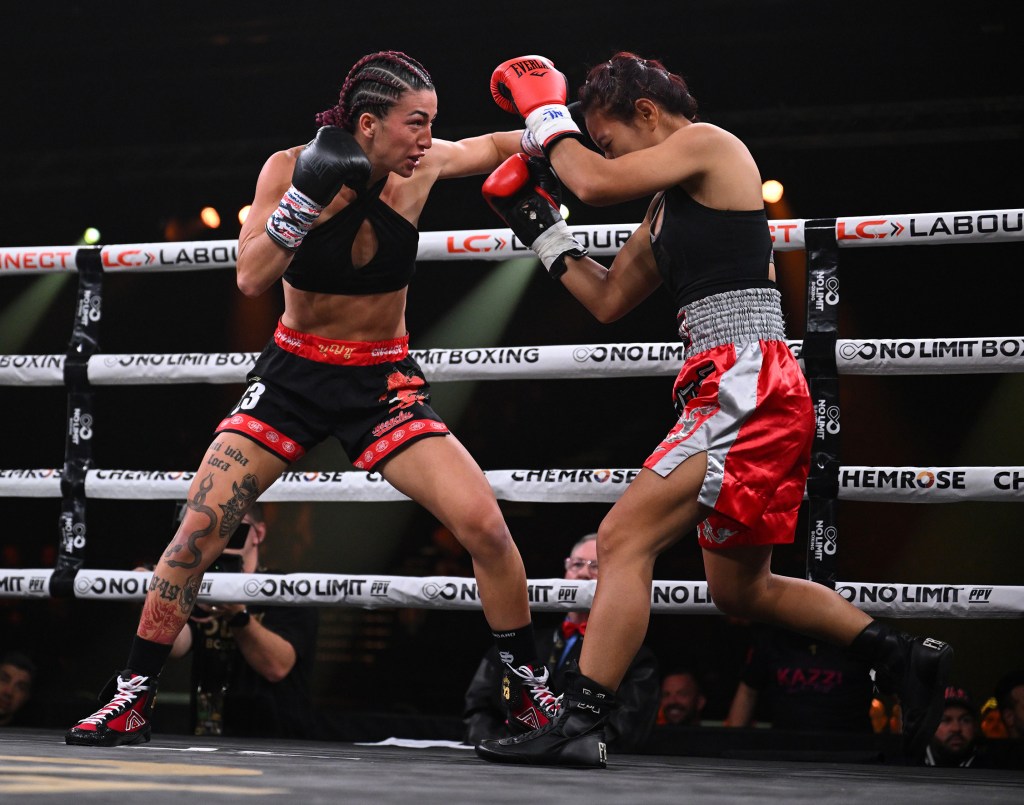
She’s recently started training with former light heavyweight boxer Paul Briggs.
She recalls her childhood revolving around her parents travelling overseas to fight and how combat sports were a defining part of her world growing up.
“All I’ve ever known from being a kid was fighting. I go to school, I go home, and we go to the gym every single day,” she says.
“I think everyone was under the impression that my parents pushed me to do it. But I’ve tried dancing, soccer, football. I’ve tried every sport, and I didn’t love anything as much as I loved martial arts, I loved Muay Thai. I loved being in the gym.”
For the past seven years, she says she’s given her whole life to the sport and sacrificed absolutely everything for boxing. She left school and says she doesn’t have a lot of friends outside her inner circle and team.
“I wouldn’t do that if I didn’t love it.”
While an intensely focused individual, Parr’s life hasn’t been without struggle – very few fighters’ lives are. She’s dealt with mental health issues and adversities she’s understandably reluctant to discuss in detail.
“I was 15 when I left school because I was really struggling. I was depressed, and I had a lot of anxiety, and I guess I was confused, like, wow, what is the point of life? Life is just so bizarre. I’ve always thought of it differently, outside of the box in that sense,” she says.
“I also wanted to give myself a free life. I’d seen the way my parents have lived their lives, and I knew if I knuckled down, I could hopefully be retired by the time I’m 30 if I make the right choices and I keep sticking to boxing because there’s a little bit more of a career there, and I haven’t looked back.”
While Parr admits her mental health issues are difficult to talk about, she wants to inspire young women who are struggling, to show them that there are successful people out there who have had similar problems and come through them, and she insists she’s in a much better place right now.
“I’ve definitely had to go down the depression route. I went through having a lot of anxiety,” she says.
“[But] I have no adversity in my life right now, and my life is amazing. [However], I’ve had to fight multiple times, having a lot of adversity and a lot of things that probably [meant I] shouldn’t have put myself in the ring, [but] I did, and I was successful. So now that I am in a good state of mind, I feel like I’m about to skyrocket and shoot for the stars.”
Parr is now even able to be a tad more philosophical about the O’Connell loss; while admitting it was “heartbreaking” at the time because she wanted to be an undefeated, perfect boxer, she now sees it as a “great life lesson”. It was a brutal eight-round battle that ended in a split decision O’Connell’s way. Asked if she wanted a re-match after her Hordern win, Parr replied with characteristic enthusiasm: “Yeah. Hell yeah.”
One of the other crucial lessons she’s learned she attributes to her parents, who instilled in her a serious work ethic inside and outside of the ring but equally as important to be a good person: respect your coaches, respect your elders.
“Boxing has taught me a lot – not only to be a weapon fighter or a deadly fighter, but you’ve also got to be a good person. I think that’s why martial arts are so amazing for anyone.”
So, how does she balance the intensity and the aggression in the ring? She’s not scared to express it.
“I’ve got my boxing, which is strong and fierce, and then I just go and sit in the water, and I float, and I feel like a little mermaid, and then I have that yin and that yang. I could sit out in the ocean for hours. You could take my phone away for weeks, and I’ll just sit out in the bush and watch all the bugs and all the animals. Look at the flowers, look at the clouds. It’s so simple.”
What’s her end game?
“I’m going to be undisputed, unified world champion. I am going to hopefully have a family, [and] I want to be travelling the world, inspiring the youth. Women’s boxing will be bigger than ever. We’ll be getting paid the same amount as men. Future Jazzy is going to be chilling. Living the island life.”
Thoughts from a pro-boxer: Jasmine Parr
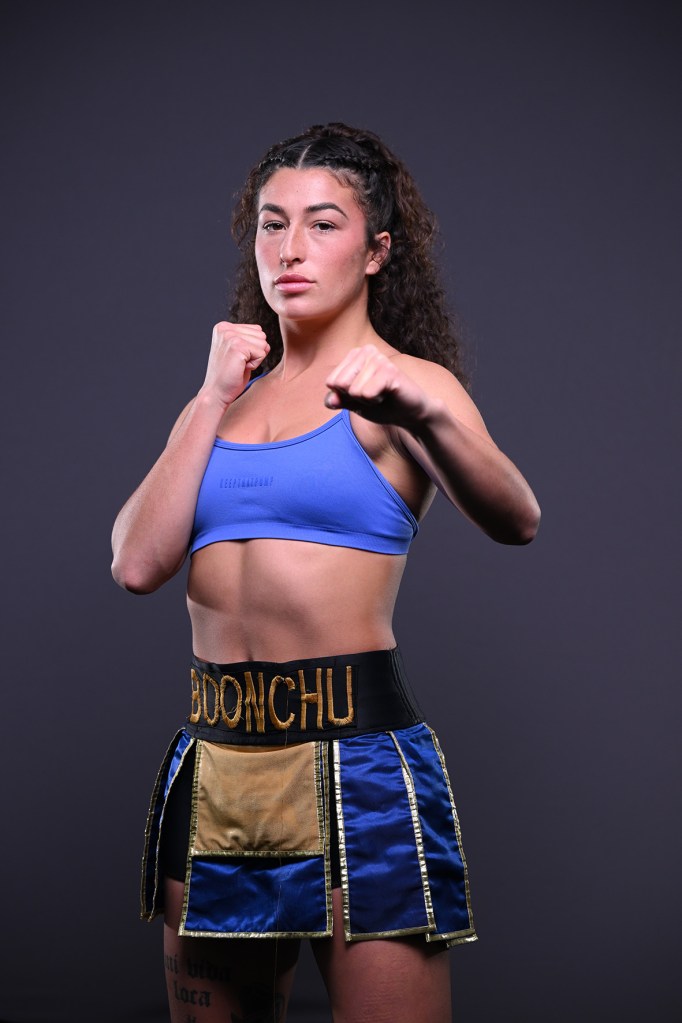
On female fighters: “My part as a female athlete is to keep pushing, to keep grinding. We’re here for the opportunity. We’re here to show up. And every single fight, I get told, wow, I didn’t know that a girls’ fight could be so entertaining. And it’s, well, yeah, we are here to bang, and the girls go hard. Every girl fight I’ve seen it’s a nonstop fire, fire, fire.”
On sparring with men: “Even if I’m sparring the guys that are my own weight, their muscle group is very different to a female. I’ve been in the gym working with the boys; I know how hard they’re hitting me. When I fight a girl that’s my weight, my size, she’s not going to hit me that hard. And I know I can take it. I know I’ve been hit hard by the lads.”
On losing: “Losing sucks… because you give 110% in the lead-up, you feel like you’ve disappointed your team, you feel like you’ve disappointed your family, you’ve disappointed yourself, your partner, all of the people that bought the tickets to support you, your sponsors.”
On fighting Shannon O’Connell: “She’s the veteran, and that was my seventh professional fight. I went up a weight class to fight her. I fought her because nobody else wanted to fight me. I thought, okay, here we go. Let’s bite the bullet. Let’s fight shotgun. And I did. Everyone said [that] it was a very close fight. Now I know what I’m capable of. She’s had triple the experience of me, and I still did that, so it feels pretty good.”
The Olympic medalist
In Paris last year, Caitlin Parker became the first Australian woman boxer to win a medal of any colour at an Olympic Games. She’s also team captain of the Australian boxing team – male and female – and has been a member of the team since she was 15.
Parker started her relationship with combat sports in Tai Kwon Do because her dad wouldn’t let her walk to school on her own until she was able to defend herself living as they did in “a low socio-economic area of Perth.” She earned her black belt at the age of 11.
After that, she moved into boxing because she wanted a different challenge.
She’d done a bit of jujitsu as well but says something was appealing about boxing, always being the only girl.
“I wanted to prove that I was not only equal to, but I could be better than the boys that I was competing [with] and sometimes men that I was sparring,” she says.
She’s always been very competitive.
“I hated that – when people didn’t believe that a girl could be good,” she says.
“I hated that – when people didn’t believe that a girl could be good.”
Caitlin Parker
“That was the same with the rugby field. (I did a few male-dominated sports as a kid.) I remember boys pointing to me and saying, ‘Oh, look at that girl’ making me a bit of a target. I’d make sure I’d go out of my way to have the best game that day, and if they came in my path, I’d probably fend them off.
“I’ve never been a violent person, never been in a fight outside of [boxing]. I’m not up for confrontation, but I just like to prove myself.”
A self-described “bubbly” person for whom family is her “biggest value”, she says she likes to be kind and find the joy in life. She likes boxing mainly because she’s good at it, but admits she’s had to work very hard.
After speaking to her, it almost defies belief that Parker says she was a “very, very shy kid with zero confidence,” given her ebullient personality today. She does credit boxing with bringing her out of her shell.
It seems, though, that Parker may have been destined for greatness no matter what she decided to do.
“With my academics, I was doing well there. I was usually one of the best in the class. Going into high school, I got an academic scholarship as well as a rugby scholarship and a music scholarship. I was head girl in primary and high school,” she says.
So, what of the fight with Chinese boxer Li Qian at the last Olympics that stopped her from graduating to a silver or gold medal? How did she mentally process that loss?
“She’s probably one of the smartest fighters I’ve come across,” she says. “I’d fought her a couple of times. And what has worked well for me in the first round, she’s been able to fix and adapt. She was able to smother me.”
Interestingly, Parker has still not watched videos of the fight yet “because I have such a positive outlook on the whole experience of getting a bronze medal, creating history, being that first female.
“I know that I left it all in the ring. I’m really proud of myself for doing that. I had nothing left in the tank, and so I don’t want to watch it back until I’m getting ready for my next fight.”
“The bronze medal is like a gold for me.”
Caitlin Parker
“I wasn’t sad at all. It’s just a weird feeling because often, when you go into the ring, it feels a bit like life and death – it’s like you’re fighting a tiger. I was able to receive my medal two days later, and stepping on the Olympic podium was a dream come true. I was probably the happiest loser there.”
She admits with candour it’s been difficult post-Olympics to see her next path clearly. “It is such an adjustment for me because I’ve had this goal for so long, and now, I’m a bit lost and trying to readjust what is my next goal.
“I’ve just announced I’m pregnant, that’s given me another motivation to be my best. I struggled with that for a little bit at the start.
“I’ve always wanted to be a mum, but it’s more the fact that there’s this unspoken assumption that when a female athlete becomes a mum, she’s stepping away from ambition and the best of her sporting days are behind her, but for many females, that’s not the end. It’s not the end of anything. You just bring another level of what you need to show up for. It’s the next chapter.”
What does she want her legacy to be? “I want people to come into this sport, especially the young women, to know that you can define success on your own terms and that you can do anything that you set your mind to.”
“We’ve seen such a development in women’s boxing. I’ve had the opportunity to witness the rise of women’s boxing worldwide first-hand. We’ve young girls stepping into state and national pathways who are no longer asking if they belong. They’re asking how far they can go.”
Reflections from an Olympic champion: Caitlin Parker
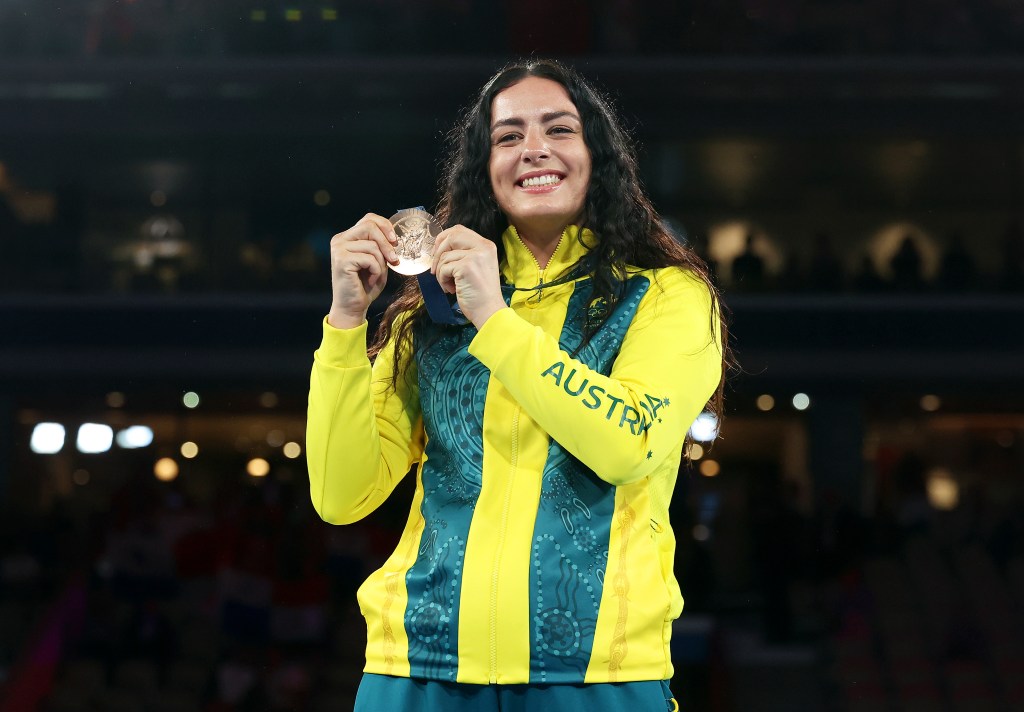
On individuality: “We have three, three-minute rounds in a fight. I can’t wait until the end of the round to talk to my coach and [have them] tell me what to do. I have to just figure it out for myself when I’m in there. The plan might not go down, might not work,
but I have to adapt in there and be flexible.”
On ambition: “My goal was to get a gold medal and.. I’d envisioned and manifested that gold medal for years and years – I had it as my screensaver on my phone. I would only wear gold jewellery, never silver jewellery, never anything grey on my clothes because it would just be in my mind that that’s silver, that’s second place.”
On the sweet science: “It’s the art of it. You can never be perfect in boxing just as you can never be perfect in life.”
On motivation: “I believe that there’s a mindset that comes from being in a male-dominated sport that often stems from knowing that you might have to outperform and be twice as good to be seen as equal, and that drives a level of resilience and hunger, which is such a powerful fuel.”
This story was featured in Issue 17 of Forbes Australia. Tap here to secure your copy.
Look back on the week that was with hand-picked articles from Australia and around the world. Sign up to the Forbes Australia newsletter here or become a member here.

